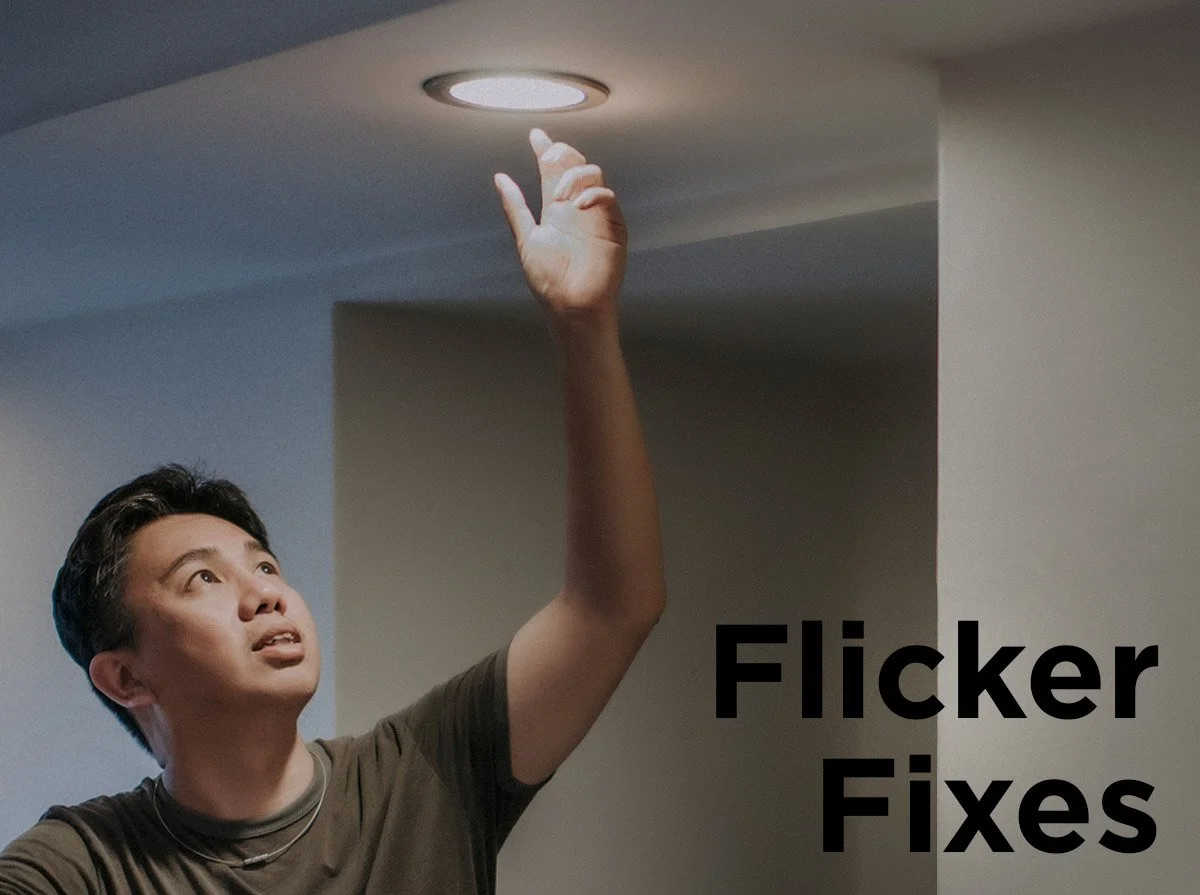Strip Light Issues Got You Strung Out?
We’ve all got those dark corners under our kitchen cabinets . . . and who couldn’t use a little colorful lighting in their home theaters? Maybe you want to highlight that architectural ceiling or uniquely frame some artwork. It’s time to accentuate all of those areas with cool and easy lighting that packs a punch! LED strip lights are available in a wide variety of colors and lengths, offer easy installation, and last up to 25,000 hours.
But before you load up your cart with a bunch of strip lights, know that they can sometimes present a few challenges. Knowing some tips and tricks ahead of time will save you some frustration down the line. We’ll go over a few of the most common troubleshooting issues now so you’ll be a strip light expert before your order hits your porch!
If your strip lights won’t come on at all, first make sure they are connected to the correct power source. LED strip lights are available in 12-volt and 24-volt versions that need to be paired with the correct voltage LED driver. Next, check all the connections. LED strip lights feature tiny pin connectors and most likely a pin isn’t lining up correctly. Typically just gently reconnecting can solve the problem. But be careful - too much force could easily bend or break the pins. And if your RGB or color-changing strip isn’t cycling through the colors, check for backwards connections or reversed polarity. Generally, one side of the strip light carries a negative charge, noted by a single dashed line, and the other side has the positive charge, indicated most often by a plus sign or the manufacturer logo. The arrow on your connectors should point to the plus sign on your strip lights. RGB color-changing LED strip lights are particularly susceptible to this reversed polarity problem, so try just flipping your strip! Using dimmers in conjunction with LED strip lights gives even greater control in achieving your desired ambiance, but they can be tricky! Make sure that you are using compatible products, and be aware that using a dimmer will prevent the lights from flashing or “chasing.” If that’s the effect you’re going for, do without the dimmer.
While available in lengths from 4 inches to 16 feet, LED strip lights are even further customizable since they can be cut to any length – just look for the cut lines marked on the sleeve. But remember your lights need to have the proper power source to operate a given length or load, so check your driver. Underpowering your lights using a 12-volt driver for 24-volt strip lights is likely to cause your lights to flicker, dim, or not light up at all. Vice versa, overpowering your lights may overheat the strip, fry the wiring, and cause your lights to fail. The driver or transformer’s output voltage must match the input voltage needed by your strip light.
And if you’re looking for a little festive lighting outdoors, LED strip lights are safe for those installations too! When left uncut and kept protected from direct contact with water, LED strip lights can brighten eaves, gazebos, decks, and even under stairs and railings for visibility at night. Using 12-volt or 24-volt options minimizes the risk of electrical shorts and safety hazards frequently encountered with line voltage outdoor lighting. Channel guides can be used to diffuse the light for a more even glow and should be used for under-railing applications to secure the strip light for a longer-lasting installation.
Is your strip light issue still a mystery? Have no fear. We have over 50 dedicated 1000Bulbs lighting experts ready to walk you through the selection process. Call 1-800-624-4488 for easy solutions to your next lighting project.









